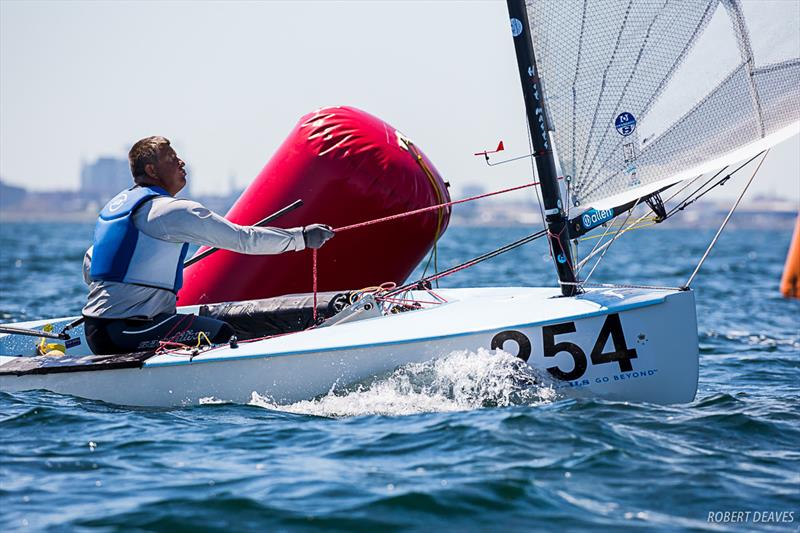
Are you ready to sail your way to victory? Whether you’re a seasoned sailor or just dipping your toes into the world of competitive sailing, preparing for regattas and sailing competitions can be both exhilarating and nerve-wracking. In this blog post, we’ll dive into essential tips and tricks to help you go from the dock to the podium with confidence. So hoist those sails, tighten those lines, and get ready to conquer the open waters like never before!
Introduction to Sailing Competitions
Sailing competitions, also known as regattas, are exciting events that bring together sailors of all levels to showcase their skills on the water. Whether you are a beginner or an experienced sailor, competing in a sailing race can be a thrilling and rewarding experience. In this section, we will cover the basics of sailing competitions, including their different formats and what to expect during a race.
There are various types of sailing competitions, ranging from local club races to international events such as the Olympics. The most common format is fleet racing, where multiple boats compete against each other on the same course at the same time. This type of competition requires strategic thinking and quick decision-making as you navigate through the racecourse while also keeping an eye out for other boats.
Another popular format is match racing, where two boats compete head-to-head in a series of races. This type of competition relies heavily on tactics and boat handling skills as you try to outmanoeuvre your opponent and cross the finish line first.
Team racing is another format that involves teams of three or more boats competing against each other. It adds an element of teamwork and coordination as team members must work together to secure victory for their team.
Before participating in a sailing competition, it is essential to familiarise yourself with the rules and regulations set by the organising body. These rules ensure fair play and safety for all participants. You should also ensure that your boat meets all safety requirements and has been properly inspected before the race.
During a sailing competition, there are several key elements to keep in mind to perform well. Firstly, understanding wind conditions is crucial as it affects your boat’s speed and direction. Keeping track of wind shifts throughout the race can give you an advantage over your competitors.
Additionally, having good communication with your crew members is essential for efficient boat handling during a race. Clear communication can help avoid mistakes or miscommunication that could cost valuable time during critical moments in the race.
Staying focused and maintaining a positive attitude is crucial for a successful performance. Sailing can be physically and mentally demanding, so it is essential to stay calm under pressure and adapt to changing conditions.
Sailing competitions are an excellent way to challenge yourself and improve your sailing skills. Understanding the various formats of racing, following rules and regulations, and having proper preparation can help you perform at your best during a competition. In the next section, we will discuss some tips on how to prepare yourself mentally and physically for a sailing competition.
Understanding the Different Types of Sailing Competitions
Sailing competitions are an exciting and challenging way for sailors to put their skills to the test. However, before you can jump into the world of racing, it’s important to understand the different types of sailing competitions that exist. Each type offers its own unique set of challenges and requires specific skills and strategies. In this section, we will discuss the various types of sailing competitions so that you can determine which one is right for you.
1) Fleet Racing: This is the most common type of sailing competition where multiple boats race against each other on a designated course. The winner is determined by who crosses the finish line first. Fleet racing can be further divided into two categories – One Design and Handicap. One Design races involve identical boats, so winning depends solely on skill rather than boat design or equipment. On the other hand, Handicap races allow boats with different designs and equipment to compete against each other based on an assigned handicap rating.
2) Match Racing: In match racing, two boats compete head-to-head in a series of races called matches. The objective is to beat your opponent in each match by crossing the finish line ahead of them. This type of competition requires excellent manoeuvring skills as well as strategic thinking to outsmart your opponent.
3) Team Racing: Unlike fleet racing where individual boats compete, team racing involves teams of three or more boats competing against each other simultaneously on a course. The scoring system is based on a point system determined by how well each team performs in relation to their opponents.
4) Offshore Racing: As the name suggests, these competitions take place in open waters and typically involve longer distances compared to other types of racing. Offshore races require advanced navigation skills as well as physical endurance due to unpredictable weather conditions.
5) Dinghy Sailing: This type of competition involves small single-handed or double-handed sailboats known as dinghies. Dinghy sailing is popular among youth sailors and is a great way to develop fundamental sailing skills such as boat handling and sail trim.
In addition to these types of competitions, there are also various events that cater to specific classes or types of boats. For example, the America’s Cup is a prestigious yacht race that features high-performance catamarans, while the Olympic Games offer several different sailing events for different classes of boats.
Understanding the different types of sailing competitions will not only help you choose which one to participate in but also prepare accordingly. Each type requires its own set of skills and strategies, so it’s important to tailor your training and equipment based on the competition you will be entering. So do your research, pick a competition that suits your strengths and interests, and get ready to take on the challenge!
Importance of Physical and Mental Preparation
Physical and mental preparation are vital aspects of any athletic competition, and sailing is no exception. This sport requires both physical strength and mental acuity, making it important for sailors to focus on training their bodies and minds in order to achieve success on the water.
Firstly, physical preparation is crucial for sailing competitions as it requires a great deal of physical endurance. Sailing involves constantly moving around the boat, adjusting sails, and manoeuvring through different positions depending on wind conditions. Therefore, sailors must have a good level of cardiovascular fitness and muscular strength to withstand the demands of the race. To achieve this, it is essential to engage in regular exercises such as swimming, cycling, or running to improve overall stamina. Additionally, incorporating specific workouts that target core muscles used in sailing such as arms, shoulders, back and legs will help build strength necessary for controlling the boat efficiently.
In addition to physical endurance and strength, balance is another key component in sailing that can be improved through training. Sailors need excellent balance when shifting weight across the boat or while tacking and jibing (turning) during races. Regular yoga sessions can help improve balance by strengthening core muscles while also increasing flexibility which can be beneficial during those quick movements needed in competitive racing.
Aside from physical training, mental preparation is equally essential for sailing competitions. Sailing requires quick decision-making skills as well as intense focus throughout the duration of a race. The ability to stay calm under pressure is critical when facing unexpected challenges such as changing winds or rough waters. Mental preparation techniques such as visualisation exercises can help sailors mentally rehearse different scenarios they may encounter during a race so they are better equipped to handle them when they arise.
Furthermore, proper nutrition plays a significant role in both physical and mental preparedness for sailing competitions. Eating a balanced diet filled with lean proteins, healthy carbohydrates and fats will fuel your body with the energy needed for long hours on the water while also promoting mental clarity and focus. It is important to stay hydrated as well, as dehydration can negatively impact both physical and mental performance.
The importance of physical and mental preparation cannot be stressed enough when it comes to competitive sailing. By incorporating regular exercise, balance training, mental preparation techniques, and proper nutrition into your training regimen, you will be better equipped to handle the physical demands of sailing while also maintaining a clear mind for strategic decision-making during races.
Setting Goals and Creating a Training Plan
Setting goals and creating a training plan are vital steps in preparing for sailing competitions. Whether you are an experienced sailor or just starting out, having a clear direction and structure for your training can greatly improve your performance on the water.
The first step in setting goals is to have a thorough understanding of your strengths and weaknesses as a sailor. This could involve self-reflection, receiving feedback from coaches or watching video footage of yourself sailing. By identifying areas that need improvement, you can set specific and achievable goals for yourself.
When setting goals, it is important to make them SMART – Specific, Measurable, Attainable, Relevant, and Time-bound. For example, instead of saying “I want to be better at downwind techniques,” a more effective goal would be “I want to improve my downwind speed by 2 knots within the next month.” This goal is specific in terms of what needs improvement (downwind speed), measurable (2 knots), attainable (within the next month), relevant to sailing competitions, and has a set time frame.
Once you have established your goals, the next step is to create a training plan. This should include different types of training such as physical conditioning, on-water practice sessions, mental preparation exercises, and tactical discussions with your team or coach.
Physical conditioning plays an important role in sailing competitions as it requires strength, endurance, balance and flexibility. Incorporating activities such as cardio workouts, weightlifting and core strengthening exercises into your routine can help build these necessary physical skills.
On-water practice sessions allow you to apply what you have learned during training on race-like conditions. It also gives you the opportunity to fine-tune any techniques or manoeuvres that may need improvement. Working with other sailors who are at a similar skill level can also provide valuable learning experiences through friendly competition.
Mental preparation is often overlooked but crucial for success in sailing competitions. Techniques such as visualisation and positive self-talk can help improve focus and confidence on the water.
Regular tactical discussions with your team or coach can also greatly benefit your training plan. This involves analysing race courses, studying weather patterns, and discussing different strategies for various scenarios. Having a strong understanding of tactics and being able to adapt to changing conditions is essential for success in sailing competitions.
Setting goals and creating a well-rounded training plan are essential steps in preparing for sailing competitions. By having clear direction and structure in your training, you will be better equipped to reach your goals and perform at your best on the water. Remember to constantly reassess and adjust your goals as needed and never underestimate the power of hard work and dedication in achieving success in sailing competitions.
Equipment and Gear: What You Need to Know
Sailing competitions require a specific set of equipment and gear to ensure the safety and success of the sailors. As a beginner, it can be overwhelming to navigate through the different types of equipment available in the market. In this section, we will discuss everything you need to know about the essential equipment and gear for sailing competitions.
Boat: The most important piece of equipment is, of course, your boat. It’s crucial to choose a boat that is suitable for your skill level and the type of competition you are participating in. There are various types of boats used in sailing competitions, such as dinghies, keelboats, multihulls, etc. Each has its unique features and requires different levels of expertise. It’s best to consult with experienced sailors or your coach before investing in a boat.
Lifejacket: Safety should always be a top priority while sailing. A lifejacket is an essential piece of gear that must be worn at all times during a competition. It helps keep you afloat if you fall into the water and provides insulation against cold temperatures. When purchasing a lifejacket, make sure it fits properly and is approved by relevant authorities.
Sails: Sails are what propel your boat forward through wind power. Depending on weather conditions and racing rules, you may need multiple sails for one competition. Common types include mainsails, jobs/genoas (fore-sail), spinnakers (downwind sail). Make sure to inspect your sails regularly for any signs of wear and tear.
Rigging: Rigging refers to all the ropes used to control the sails, including halyards (raise/lower sails), sheets (control sail shape), outhauls (adjust foot tension), etc. Familiarise yourself with each rope’s function before competing as they play an integral part in controlling your boat’s speed and direction.
Wetsuit/Drysuit: Depending on the water temperature, you may need to wear a wetsuit or a drysuit for protection against the cold. A wetsuit is made of neoprene material and provides insulation by trapping a thin layer of water between your skin and the suit. A drysuit, on the other hand, keeps you completely dry as it is waterproof.
Other essential items to consider include gloves (for grip and protection), sunglasses (to protect against UV rays and glare), sunscreen (to protect against sunburn), and a waterproof watch (to keep track of time during races).
In addition to these essential pieces of equipment, it’s crucial to have extra ropes, tools for repairs, first aid kit, and emergency flares onboard in case of any unforeseen circumstances.
Remember always to check your equipment before setting sail, and never compromise on safety measures. With proper gear and equipment, you’ll be well prepared to take on any sailing competition with confidence.
Conclusion
Sailing competitions can be intense and challenging, but with proper preparation and training, you can increase your chances of success. Remember to focus on both physical and mental preparation, practice in different weather conditions, stay organised and familiarise yourself with the course beforehand. By following these tips, you’ll be well-equipped to tackle any sailing competition that comes your way. So set sail towards your goals and keep pushing yourself to improve – who knows, you may just find yourself standing on the podium as a champion sailor.



